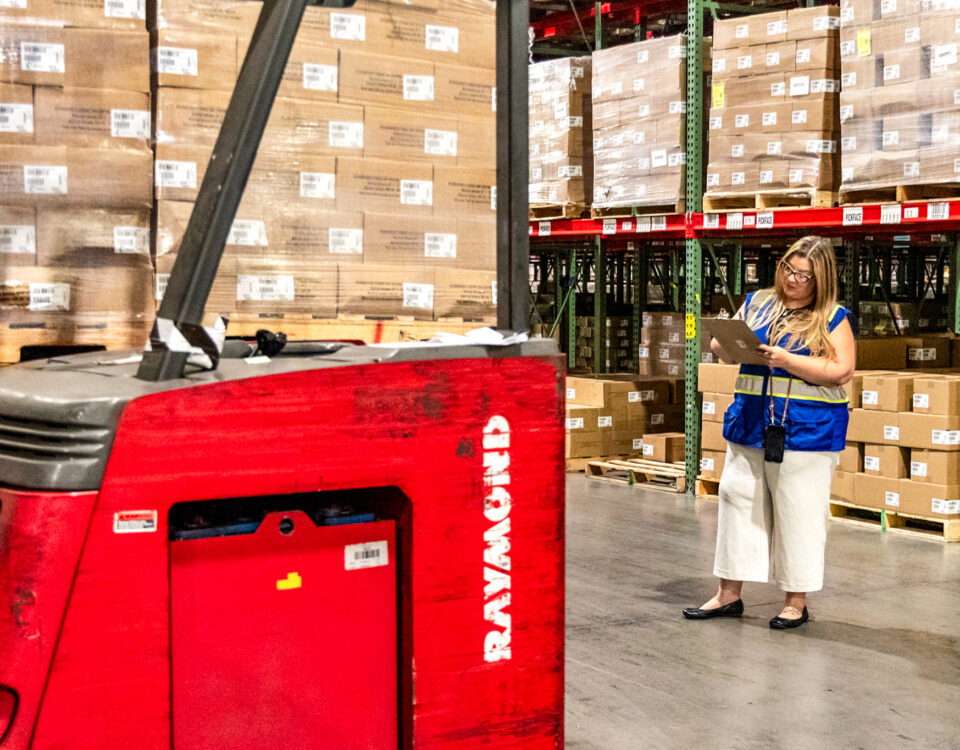Every fulfillment decision either drives revenue—or drains it.
The cost of slow shipping, inefficient routing, and misplaced inventory isn’t just customer frustration—it’s lost sales, higher return rates, and shrinking margins.
Fast-growing brands can’t afford fulfillment that lags behind demand. When orders don’t move efficiently, customer trust erodes, costs skyrocket, and competitors take market share.
West Coast fulfillment isn’t just a strategic move—it’s a competitive necessity. It eliminates shipping inefficiencies, slashes costs, and positions inventory exactly where it needs to be to accelerate growth.
In this article, we’ll break down the key advantages of West Coast fulfillment centers—why they reduce costs, increase speed, and ensure long-term supply chain stability.
Why the West Coast is a Game-Changer for Fulfillment
Location is more than just a pin on the map—it’s a logistical advantage that determines shipping speed, cost efficiency, and supply chain reliability.
Many brands fail to recognize how much fulfillment location impacts their bottom line. Where inventory is stored dictates transit times, shipping costs, and supply chain flexibility.
An optimized fulfillment strategy isn’t just about fast deliveries—it’s about ensuring cost efficiency, improving customer experience, and protecting operational margins. A West Coast fulfillment center may help you achieve these goals by placing inventory closer to demand, increasing shipping efficiency, and reducing unnecessary expenses.
Let’s review four strategic advantages of West Coast fulfillment centers.
1. Eliminate Costly Shipping Delays That Cut Into Margins
When fulfillment is slow, the impact goes beyond missed delivery dates. Delays increase customer service inquiries, drive up return rates, and weaken brand trust. The longer customers wait, the less likely they are to reorder.
A West Coast fulfillment center eliminates these risks by:
- Positioning inventory closer to key markets to enable next-day and two-day shipping.
- Reducing last-mile delivery times, ensuring shipments move through the supply chain efficiently.
- Minimizing customer service strain by reducing order-related inquiries and complaints.
Faster fulfillment doesn’t just meet customer expectations—it protects revenue and strengthens retention. By reducing avoidable delays, you can improve profitability and sustain long-term customer loyalty.
2. Reduce Shipping Costs Without Sacrificing Speed
Shipping expenses are often one of the largest operational costs, yet many businesses overspend due to inefficient fulfillment placement. Cross-country shipments, reliance on air freight, and poor transit optimization lead to unnecessary expenses that erode margins.
A West Coast fulfillment strategy reduces costs by:
- Lowering ground shipping expenses by shortening transit distances.
- Reducing reliance on costly air freight with optimized ground transportation.
- Eliminating unnecessary cross-country shipping fees that increase fulfillment overhead.
By reducing shipping costs without compromising delivery speed, you can free up capital to reinvest in marketing, product development, and customer acquisition. A fulfillment strategy that maximizes efficiency ensures every dollar spent on logistics contributes to overall business growth.
3. Strengthen Supply Chain Resilience with Seamless Imports
A slow or inefficient supply chain disrupts inventory flow, increases holding costs, and causes unnecessary stockouts. Without proximity to key distribution hubs, you risk unpredictable lead times and added logistics expenses.
A West Coast fulfillment center streamlines import efficiency by:
- Speeding up inventory replenishment, allowing goods to move from port to warehouse faster.
- Lowering inland freight costs by reducing long-haul trucking expenses.
- Providing greater agility during peak seasons, ensuring businesses can adjust inventory levels based on demand.
By optimizing import logistics, you avoid costly delays and keep inventory flowing smoothly. This allows for better forecasting, reduced carrying costs, and a supply chain that adapts to demand fluctuations without disruption.
4. Scale Without Fulfillment Bottlenecks Slowing Growth
Scaling requires a logistics infrastructure that grows with demand. A fulfillment strategy that can’t handle fluctuations in order volume, geographic expansion, or seasonal peaks leads to processing slowdowns, increased fulfillment errors, and higher operational costs.
A West Coast fulfillment center enables scalable logistics by:
- Offering flexible storage capacity so businesses can scale warehouse space as needed.
- Expanding geographic reach, ensuring fast delivery without additional distribution hubs.
- Optimizing inventory distribution to prevent bottlenecks and reduce shipping delays.
Scalability is about more than just handling larger order volumes—it’s about ensuring fulfillment remains cost-effective, reliable, and aligned with business growth. A strategic fulfillment network eliminates growing pains and allows you to expand without operational setbacks.
A West Coast fulfillment center helps you reduce costs, accelerate shipping, and strengthen supply chain resilience. This is because fast, reliable fulfillment isn’t just about logistics—it’s about staying ahead of the competition and delivering a superior customer experience. The advantages of West Coast fulfillment centers ensure you can meet rising customer expectations while maintaining cost-effective operations.
If you’re ready to eliminate inefficiencies, accelerate order processing, and optimize fulfillment operations, download our checklist: “How to Cut Delays, Speed Up Orders & Keep Customers Happy.”












